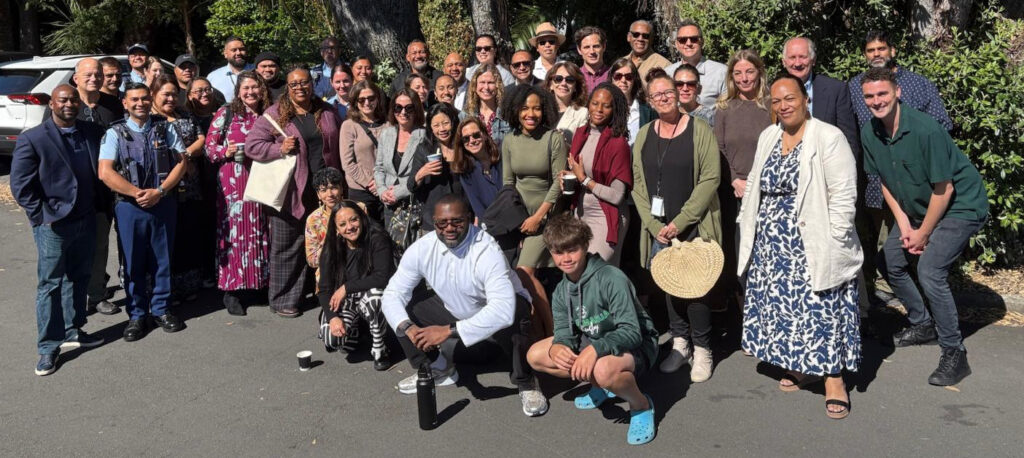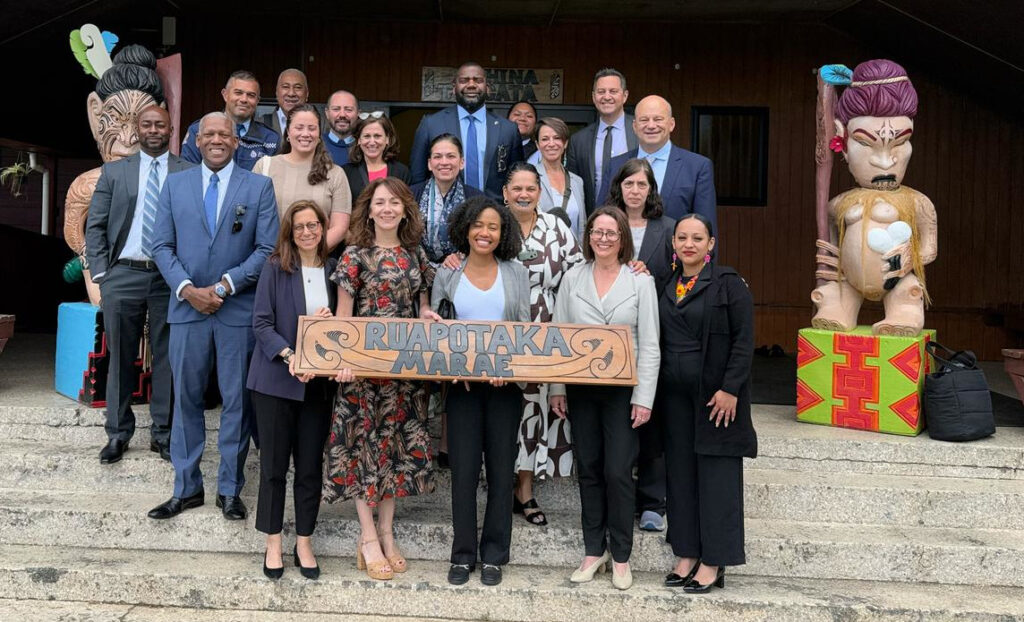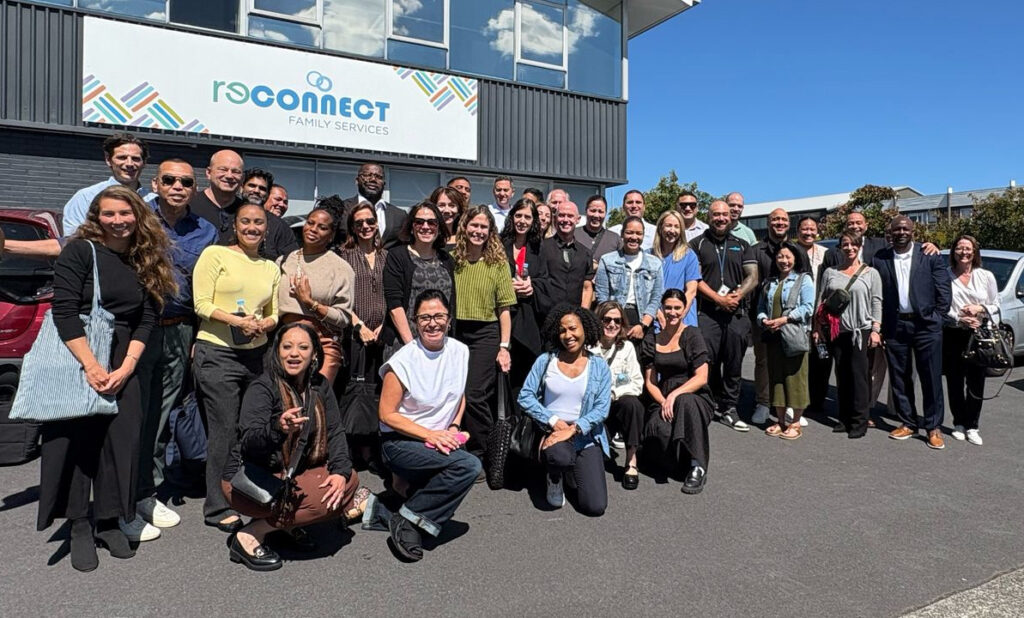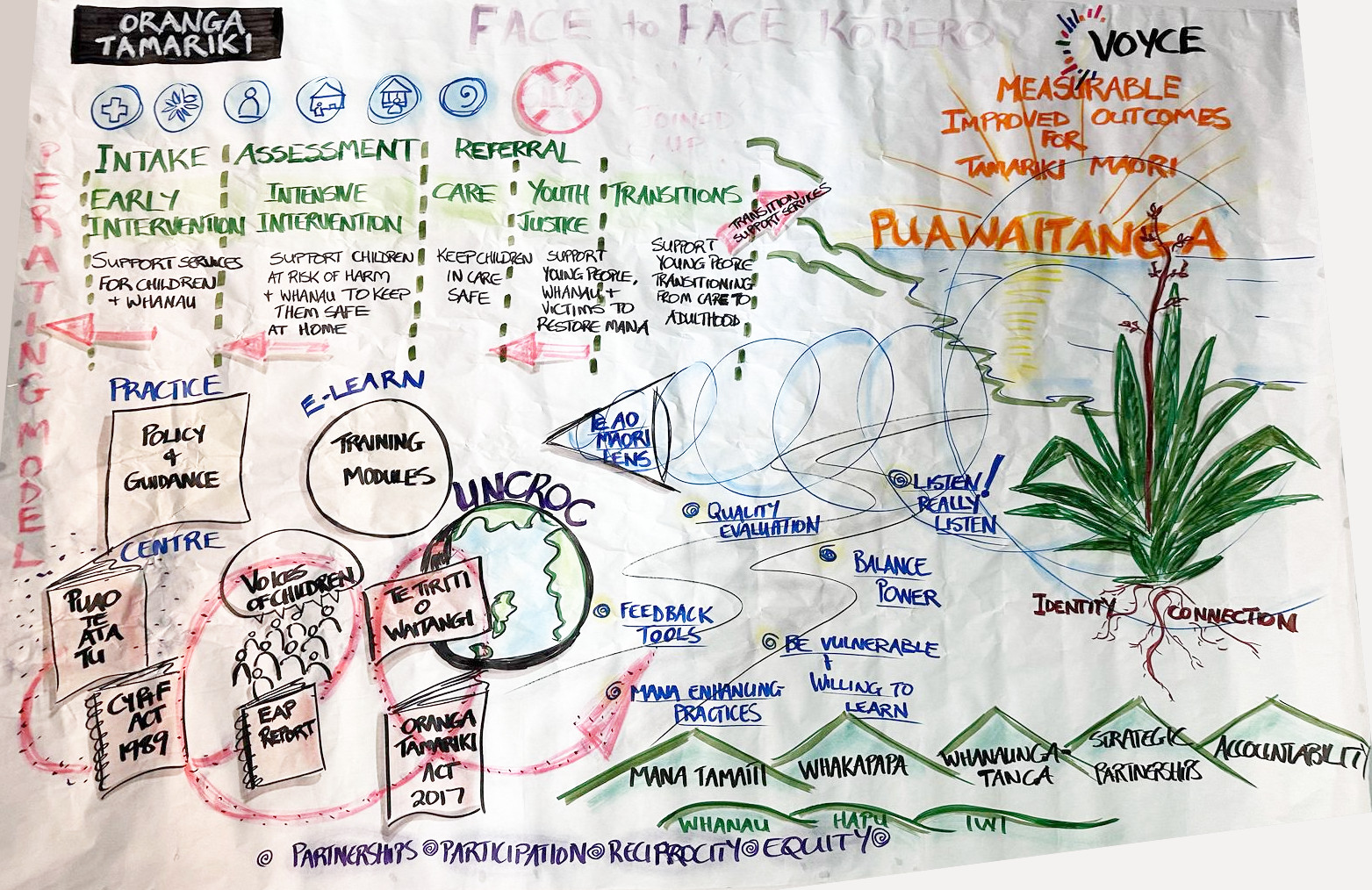By: Allison Magee
Last month, I joined 28 colleagues and partners – including youth justice systems leaders and advocates – on a journey to Aotearoa, the Māori name for New Zealand. We traveled there to deepen the relationships among these cross-sector leaders from Alameda and San Francisco counties, and to create space for participants to reimagine youth justice in the Bay Area.
After a year and a half of planning this Journey to Justice, we witnessed firsthand what’s possible when a society centers the wisdom and culture of Indigenous people and approaches youth justice with care, healing, and love. It was a truly life changing experience for our group, which included organizers and leaders across the juvenile justice sector, community based organizations, and philanthropy who are committed to a better future for our young people. As we return to our day-to-day lives, we are reflecting on what we learned and what comes next for our collective efforts.

How the Journey to Justice came to fruition:
In the past few years, we have witnessed surging momentum on the youth justice front in Alameda and San Francisco counties. Recent reforms, both at the state and local levels, exemplified the power of collaborative leadership.
California’s unprecedented efforts to affect transformational change in our youth justice systems have resulted in a 75% drop in the number of youth held across the state’s detention facilities between 2002 and 2023. San Francisco and Alameda counties have reduced their youth incarceration rates by 78% and 73% respectively over the same period. Meanwhile, youth are making their voices heard about what they need to thrive.
Understanding that continued progress is far from guaranteed, we asked ourselves: what can we as community-based organizations, youth justice advocates, and philanthropy do to build on recent wins, particularly as the narrative around community safety reverts back to punishment and incarceration?
I have always admired Aotearoa’s approach to youth justice and how it is grounded in Māori culture, community, and healing. As I spoke with peers in philanthropy who were also supporting advocacy and systems change work, the idea for Journey to Justice began to unfold. We decided to convene leaders from across the youth justice system in Alameda and San Francisco counties – including judges, district attorneys, public defenders, advocates, and directly impacted individuals – who could be inspired by this trip and each other to interrogate the systems in which they work. We also partnered with Impact Justice to design an itinerary that explored all of the unique complexities of New Zealand’s youth justice system. Getting there was no small feat: schedules, volatile national and local political climates, growing economic concerns, and simple everyday realities were against us, but this group understood the importance of the moment and was committed to seeing it through. After multiple meet-and-greets and learning sessions, and familiarizing ourselves with the Māori Culture and Aotearoa’s government and youth justice system structures, we were off.

The learnings that inspired our imagination:
During our time together, we heard directly from the organizations that serve and support system-impacted youth, their families, and communities in Aotearoa. We packed our days from morning until evening visiting non-governmental organizations, youth courts, police stations, and youth residences. We met with judges, police and their youth aid officers, advocates, and system leaders.
We learned how VOYCE, a local NGO with nine offices across Aotearoa, centers youth voices to advocate for fair laws that impact them, and enhance the mana, or the identity, power, and strength, of young people. While visiting Reconnect Family Services, case workers shared how everything they do is focused on the unique needs and circumstances of each child and family they serve.
Regardless of who or where we met, our visits were steeped in Māori cultural practices. Each visit began with a powhiri, or welcoming ceremony, that included a call to welcome, speeches, songs, the hongi (pressing of noses), and finally sharing of food. Everyone participated in the powhiri regardless of the individual’s role or position of authority.
The presence of Māori culture was most striking in the Rangatahi & Pasifika Courts, which apply Youth Court laws, processes, and consequences on a marae (a communal or sacred place that serves religious and social purposes for the Māori) or in a Pasifika community setting. These courts center cultural practices and inclusion of families and communities in all of their interactions and processes. While attending Rangatahi, we saw a young person’s family advocate for their “release” from the youth justice system. We observed as elders who represented the marae and the surrounding community, provided input on the young person’s progress, and we watched as the judge sang a waiata, or Māori song of celebration, in acknowledgement of the young person’s success in completing his plan. We were touched by the loving embrace the young person and his family gave to the judge and youth aid officers that presided over their case as they concluded the proceeding – that same young person walked away with a clean record and a network of community supports surrounding him and his family.
There were many bright spots. This included family group conferencing, where social workers, advocates, and the police as well as the victim and young person who committed the crime decide together on what redemption looks like outside of the court system. We also noted the expansive role New Zealand’s police force has in its youth justice system, structured to respond to, not criminalize the developing needs of young people. Throughout the process, a young person has access to a caseworker, youth advocate, and their family if they come into contact with the youth justice system.
New Zealand’s system also works to ensure access to needed supports and services before a young person becomes system involved. The Oranga Tamariki Act, or Children’s and Young People’s Well-being Act of 1989, which established New Zealand’s current youth justice system structure, specifically states, “Unless public interest requires otherwise, criminal proceedings should not be instituted against a child or young person if there is an alternative means of dealing with the matter.”. A priority of their system is to keep young people from entering it in the first place.
As inspiring as some of the approaches were, we also acknowledged the gaps and opportunities. Most notably, recidivism rates for those with the highest needs remain high and Māori youth continue to be overrepresented in the justice system, just as youth of color are in the U.S, including the Bay Area.
Our group spoke openly and honestly about these similarities and differences and how sectors in our counties could work together differently to change the youth justice system from within. We also built and deepened our relationships with one another. Many in our group observed that the cultural rituals and practices in which we participated brought us closer together, helping our imaginations guide us towards transforming the way we work together and ultimately, how we better support the success of our young people.
What comes next:
Many cohort participants told us that this was a trip of a lifetime. Their personal and professional learnings inspired their imagination and excitement to work with one another to create a better future for our young people. Many participants have already begun to explore how to bring in cultural aspects across diverse communities of the Bay Area into the youth justice space. Everyone acknowledged that the real work began upon our return to the Bay Area, and everyone was eager to get started.
Over the next year, we will host gatherings and workshops to give participants an opportunity to reconnect with one another about the experience, reflect on what is happening in their work and sector, and share what they are committing to and what they are holding each other accountable to do. We look forward to sharing their perspectives and progress with you throughout the coming months. In our next piece, we will share more about what three reflections emerged. Follow along with us at zff.org/journey-to-justice.



